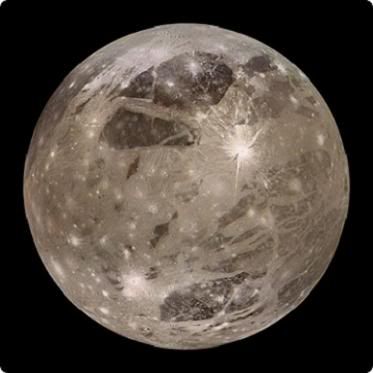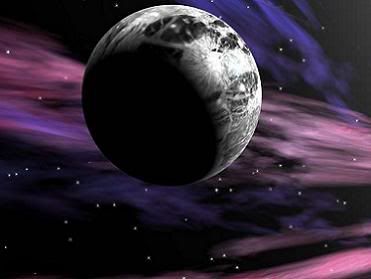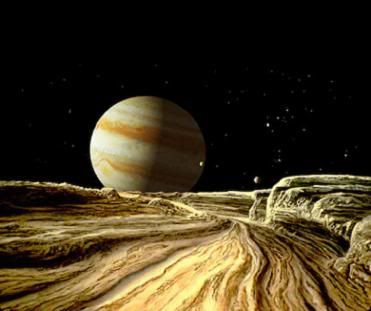Post by glactus on Oct 5, 2011 0:41:57 GMT
Ganymede is the largest moon of Jupiter and is the largest in our solar system with a diameter of 5,262 km (3,280 miles). If Ganymede orbited the Sun instead of Jupiter it could be classified as a planet. Like Callisto, Ganymede is most likely composed of a rocky core with a water/ice mantle and a crust of rock and ice. Its low density of 1.94 gm/cm, indicates that the core takes up about 50% of the satellite's diameter. Ganymede's mantle is most likely composed of ice and silicates, and its crust is probably a thick layer of water ice.

Solar System's biggest moon - Ganymede
Ganymede has no known atmosphere, but recently the Hubble Space Telescope detected ozone at its surface. The amount of ozone is small as compared to Earth. It is produced as charged particles trapped in Jupiter's magnetic field rain down onto the surface of Ganymede. As the charged particles penetrate the icy surface, particles of water are disrupted leading to ozone production. This chemical process hints that Ganymede probably has a thin tenuous oxygen atmosphere like that detected on Europa.

Ganymede in orbit around Jupiter
Ganymede has had a complex geological history. It has mountains, valleys, craters and lava flows. Ganymede is mottled by both light and dark regions. It is heavily cratered especially in the dark regions implying ancient origin. The bright regions show a different kind of terrain - one which is grooved with ridges and troughs. These features form complex patterns and have a vertical relief of a few hundred meters and run for thousands of kilometers.

Jupiter from Ganymede
The grooved features were apparently formed more recently than the dark cratered area perhaps by tension from global tectonic processes. The real reason is unknown; however, local crust spreading does appear to have taken place causing the crust to shear and separate.

Credits: These are non copywrite images
Text by "Solar Views"
www.solarviews.com/eng/ganymede.htm

Solar System's biggest moon - Ganymede
Ganymede has no known atmosphere, but recently the Hubble Space Telescope detected ozone at its surface. The amount of ozone is small as compared to Earth. It is produced as charged particles trapped in Jupiter's magnetic field rain down onto the surface of Ganymede. As the charged particles penetrate the icy surface, particles of water are disrupted leading to ozone production. This chemical process hints that Ganymede probably has a thin tenuous oxygen atmosphere like that detected on Europa.

Ganymede in orbit around Jupiter
Ganymede has had a complex geological history. It has mountains, valleys, craters and lava flows. Ganymede is mottled by both light and dark regions. It is heavily cratered especially in the dark regions implying ancient origin. The bright regions show a different kind of terrain - one which is grooved with ridges and troughs. These features form complex patterns and have a vertical relief of a few hundred meters and run for thousands of kilometers.

Jupiter from Ganymede
The grooved features were apparently formed more recently than the dark cratered area perhaps by tension from global tectonic processes. The real reason is unknown; however, local crust spreading does appear to have taken place causing the crust to shear and separate.
Credits: These are non copywrite images
Text by "Solar Views"
www.solarviews.com/eng/ganymede.htm


